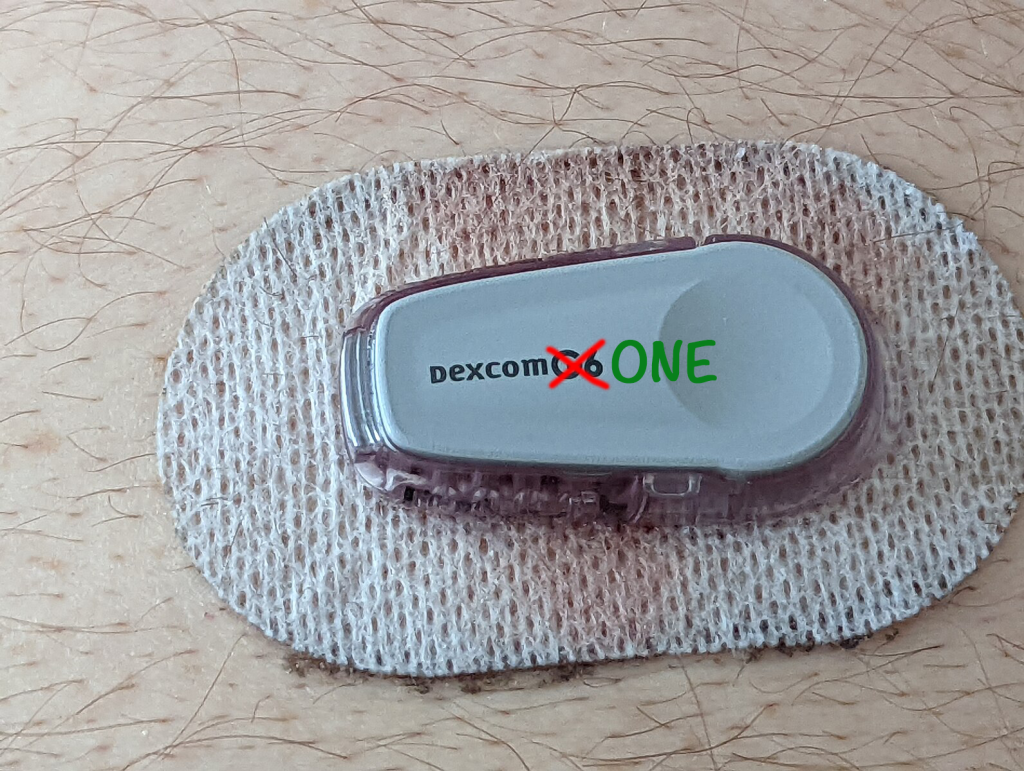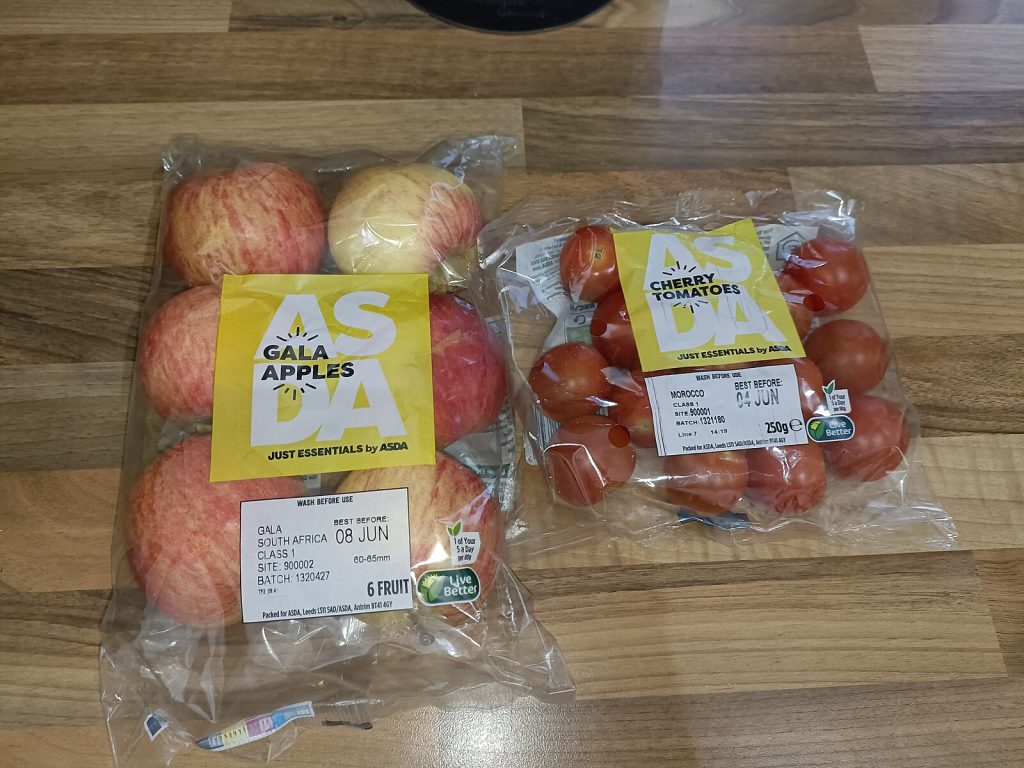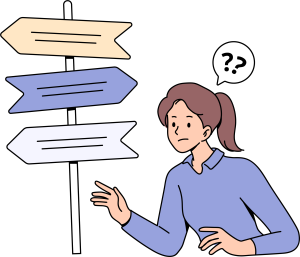Ever wonder what makes some people seem to always be three steps ahead? That is strategic thinking and I know that you already have the capacity for it. Let’s explore seven incredible powers that can transform how you approach challenges and create lasting impact.
TL;DR
Strategic thinking empowers you to:
- Develop a long-term mindset
- Anticipate second-order consequences
- Solve complex problems
- Communicate through storytelling
- Make better decisions
- Synthesize insights from data
- Identify force multipliers

1. Play the long-game otherwise known as the “Long-Term Mindset“
Think of strategic thinking like planting a garden rather than buying flowers. Sure, you could grab some pre-grown plants for instant gratification, but imagine the satisfaction of watching seeds grow into something magnificent.
Picture a company that made a bold move by launching a budget-friendly brand. Their peers thought they were crazy, diluting their premium image. But they saw something others missed – economic waves that would push consumers toward value. Years later, that “risky” move? It became their golden ticket to massive growth.
Well this is not just a diffuse strategy thought experiment:
In 1991, Giorgio Armani introduced A|X Armani Exchange to target a younger, fashion-forward audience seeking more accessible price points. This move aimed to capture a broader market segment without compromising the exclusivity of the main Giorgio Armani brand. Despite initial skepticism from industry peers about potential brand dilution, A|X Armani Exchange thrived, expanding to over 270 stores worldwide. This strategic initiative not only safeguarded Armani’s market position during economic fluctuations but also contributed significantly to the company’s overall growth.
Renault’s Dacia Spring Electric Renault leveraged its budget-friendly Dacia brand to introduce the Spring Electric in 2021, aiming to provide an affordable electric vehicle option in Europe. This strategy allowed Renault to tap into the growing demand for cost-effective EVs without diluting its core brand’s premium image.
This has also happened in our own heath space:
Pfizer’s Viagra and Avigra: Pfizer introduced Viagra® for erectile dysfunction. In New Zealand, to address market dynamics, Pfizer launched Avigra®, a chemically identical version of Viagra®, but at a lower price point. This move allowed Pfizer to cater to a more price-sensitive segment without affecting the premium positioning of Viagra®
Merck’s Proscar and Propecia: Merck marketed finasteride under the brand name Proscar® for treating benign prostatic hyperplasia. Later, it introduced Propecia®, a lower-dose version of finasteride, for treating male pattern baldness. By creating a sub-brand for a different indication, Merck expanded its market reach while maintaining distinct brand identities for each use case.
Dexcom ONE and ONE+ vs. G6 and G7 premium products

In a bold move that challenged industry norms, Dexcom, expanded its product line to serve a broader patient population at a lower price point. While known for their premium devices, Dexcom recognized an unmet need in the market and introduced the more accessible Dexcom ONE and ONE+ alongside their flagship G6 and G7 models. This decision raised questions with some analysts who wondered if offering lower-priced options would diminish Dexcom’s premium positioning. However, Dexcom understood a crucial market reality: countless patients needed reliable diabetes management tools but faced significant cost barriers.
What made this strategy particularly effective was Dexcom’s commitment to maintaining quality across all price points. By using the same core sensor technology throughout their product line, they ensured that every patient, regardless of which model they chose, received accurate and dependable glucose monitoring. The Dexcom ONE and ONE+ offered essential features that met clinical needs while making the technology more financially accessible.
Takeaway: Strategic thinkers cultivate patience and invest in sustainable growth rather than chasing short-term wins.
2. Seeing Around Corners the art of “Second-Order Consequences“
Every decision has ripple effects beyond its immediate impact. Strategic thinkers ask, “What happens next?” to anticipate unintended consequences. You know that feeling when you make a move in chess and immediately regret it because you didn’t see what would happen three moves later? That’s what we’re talking about here.
A real-world example: Telstra the Australian telecoms company’s CMO proposed calling a million customers to thank them. While it was a resounding success there was a substantial risk in this which could have been disastrous for Telstra:
- Productivity loss due to call volume
- Need for new systems to track feedback
- Increased workload for support teams already managing existing issues
- Incentive structures that unintentionally encouraged unnecessary calls
When the risk doesn’t pay off: A number of such ventures have fallen flat due to lack of vision into Second-order consequences.
For example Ecomom, an e-commerce platform specializing in eco-friendly mother and child products, implemented a policy offering a 50% discount to attract customers. However, this strategy backfired as the discounts were not limited, allowing repeat customers to continually purchase products at half price. This practice led to significant financial losses, as the discounted prices were below cost, ultimately contributing to the company’s closure in early 2013.
A more recent example which is still playing out is that of UK supermarket chain ASDA and its Just Essentials brand introduced in May 2022:

Initial Strategy and Success: In response to the escalating cost-of-living crisis, Asda launched the Just Essentials line to provide affordable grocery options. The range quickly gained traction, contributing to a 9.6% year-on-year increase in like-for-like sales during the second quarter of 2023. Notably, own-brand sales surged by 14.7% in the same period, with the Just Essentials range playing a significant role in this growth.
Second Order Consequences: Despite its commercial success, the Just Essentials range led to several unforeseen challenges:
- Customer Stigmatization: The range’s bright yellow packaging, intended for easy identification, was criticized for acting as a “poverty marker,” potentially embarrassing shoppers seeking budget-friendly options.
- Financial Implications: The popularity of the low-margin Just Essentials products raised concerns about overall profitability, as increased sales of budget items could lead to a decline in average profit margins.
- Product Availability: In August 2023, Asda reduced the Just Essentials line from 293 to 269 products, citing factors like availability and product duplication. This move, while strategic, risked alienating cost-conscious consumers who relied on the broader range. Industry analysts suggested it was a calculated move to manage low profit margins associated with budget-friendly products and to prevent customers from trading down from standard tiers, which could adversely affect overall profitability.
- Customer Backlash: The reduction in product lines led to frustration among customers who relied on the Just Essentials range for affordable essentials. Discussions on platforms like Reddit highlighted concerns over the unavailability of certain products online, despite their presence in physical stores. Customers expressed dissatisfaction, noting that the inconsistency forced them to seek alternatives, sometimes at higher prices.
Strategic Reflection:
Asda’s Just Essentials range, was designed to provide affordable options during challenging economic times. While it successfully met immediate market demands, strategic decisions such as reducing the product line from 293 to 269 SKUs introduced challenges related to brand perception, financial health, and customer satisfaction. This scenario underscores the importance of anticipating second-order consequences in strategic planning, ensuring that well-meaning initiatives do not inadvertently alienate the intended beneficiaries.
This is an all to common pitfall in medical devices:
A notable example is Cygnus, Inc., a biotechnology company that developed the GlucoWatch, a non-invasive glucose monitoring device launched in early 2002. Despite its innovative approach, the GlucoWatch faced several challenges:
- Technical Issues: The device encountered difficulties in clinical efficacy and measurement reproducibility, leading to questions about its reliability.
- Market Adoption: There were significant adoption barriers, as the device required a paradigm shift in diabetes management. Additionally, the lack of widespread medical reimbursement deterred potential users.
- Financial Strain: The combination of low sales and high operational costs led to financial instability. By 2007, Cygnus dissolved, highlighting the risks associated with launching a new medical device without adequately addressing potential market and operational challenges.
By thinking through second and third-order consequences, strategic thinkers avoid costly missteps.
Takeaway: Always ask, “Then what?” before making a decision.
3. Cracking the Right Problems the skill of Problem Solving

Value is created by solving problems. The larger the problem, the more impact solving it has. You can’t solve a fuzzy problem. It’s like trying to hit a target in the fog.
Many strategists struggle because they look for a silver bullet—a perfect framework to guarantee success. But strategy starts by defining the problem clearly:
Example: Instead of saying, “We need more customers,” refine it to: “We need to grow customers in [A] segment by [B] percent in [C] years.”
Instead of saying “We need more customers” (which is about as helpful as saying “we need more success”), try this: “We need to grow our Gen Z customer base by 30% in the next 18 months.” See the difference? Now you’ve got something you can actually tackle.
This specificity approach forces:
- A baseline (current state)
- A big idea (solution)
- An approach (execution plan)
Netflix’s Transformation of Movie Rentals
In the late 1990s, traditional video rental stores were prevalent, but they posed several challenges: customers had to travel to physical locations, desired titles were often unavailable, and late fees were a common frustration. Reed Hastings, co-founder of Netflix, identified these pain points and redefined the problem:
Problem Statement: “Going to the video store requires fighting traffic, wandering the aisles, and waiting in long lines just to get a single movie.”

By clearly articulating these specific customer inconveniences, Netflix developed a mail-based rental system, allowing customers to select movies online and receive them by mail without due dates or late fees. This clear problem definition paved the way for Netflix’s later transition to streaming services, revolutionizing the home entertainment industry.
Netflix applied a similar approach again when transitioning to online streaming. Initially, the company identified the limitations of its DVD-by-mail service, such as shipping delays and inventory constraints, which hindered immediate access to content. Recognizing the potential of the internet to deliver media directly to consumers, Netflix redefined its problem statement to:
“How can we provide our customers with instant access to a vast library of content without the delays and physical limitations inherent in DVD rentals?”
This clear articulation led to the development and launch of their streaming service in 2007, enabling subscribers to watch content on-demand over the internet. This strategic shift addressed the refined problem and positioned Netflix as a pioneer in the streaming industry.
Medical Devices and Pharma professionals are more skilled at this than most.
Addressing Tricuspid Regurgitation in Inoperable Patients: CroiValve
Tricuspid regurgitation (TR) occurs when the heart’s tricuspid valve fails to close properly, leading to blood backflow and subsequent complications. Traditional treatments often involve open-heart surgery, which many elderly patients cannot endure due to associated risks. Recognizing this gap, CroíValve, under the leadership of CEO Lucy O’Keeffe, developed the DUO™ Tricuspid Coaptation Valve System. This minimally invasive device is designed to work in tandem with the native tricuspid valve, restoring its function without the need for open-heart surgery. The DUO™ system has shown promising results, with significant improvements in patients’ quality of life and symptom reduction. In October 2024, the first patient in the United States was treated with this system as part of the TANDEM II Early Feasibility Study, marking a significant milestone in providing alternative treatments for TR patients.
Unrefined Problem: “Tricuspid regurgitation is a common heart condition.”
Refined Problem: “Elderly patients with tricuspid regurgitation who are ineligible for open-heart surgery lack minimally invasive treatment options to improve their quality of life.”
Development of Long-Lasting Batteries for Implantable Cardiac Defibrillators (ICDs)
Implantable Cardiac Defibrillators (ICDs) are critical devices that detect and correct life-threatening heart arrhythmias. Historically, the limited lifespan of ICD batteries necessitated frequent surgical replacements, posing increased risks and burdens to patients. Dr. Esther S. Takeuchi addressed this issue by developing a lithium/silver vanadium oxide (Li/SVO) battery, which significantly extended the battery life of ICDs to approximately five years. This advancement reduced the frequency of replacement surgeries, thereby decreasing associated health risks and healthcare costs. Dr. Takeuchi’s innovation has been widely adopted since its first implantation in 1987 and continues to be the standard power source for ICDs today.
Unrefined Problem: “ICD devices require frequent battery replacements.”
Refined Problem: “Patients with ICDs undergo multiple surgeries solely for battery replacements, increasing health risks and healthcare costs.”
The Pharma Model of the Target Product Profile:
The pharmaceutical industry has utilized the concept of a Target Product Profile (TPP) since the 1990s as a strategic planning tool to guide drug development. The U.S. Food and Drug Administration (FDA) formalized its use in 2007, defining the TPP as a strategic development process tool that embodies the notion of “beginning with the goal in mind.”
A TPP outlines the desired characteristics of a drug, including its intended use, target populations, and safety and efficacy profiles. This structured approach facilitates clear communication between pharmaceutical companies and regulatory authorities, ensuring alignment on development objectives and regulatory expectations. By providing a comprehensive framework, the TPP helps streamline the drug development process, potentially reducing time and costs associated with bringing new therapies to market.
The adoption of the Target Product Profile (TPP) in the pharmaceutical industry has significantly enhanced problem-solving, providing a structured framework for drug development. Clear definitions of the desired attributes of a drug—such as its intended use, target population, and safety and efficacy profiles structured into the TPP ensures that all stakeholders share a unified vision from the outset. This alignment facilitates focused research and development efforts, streamlines communication with regulatory bodies, and aids in anticipating potential challenges early in the development process. Consequently, the TPP not only accelerates the pathway to market but also reduces costs and improves the likelihood of regulatory approval, exemplifying how a structured approach to problem definition can lead to more effective and efficient solutions in pharmaceutical development.
Takeaway: Strategy is about winning. Winning comes from solving problems.
4. Telling Stories That Stick harnessing “Storytelling“
A strategic thinker is a storyteller. Clear thinking leads to compelling, persuasive narratives that drive buy-in. You can either dump a pile of puzzle pieces on the table (here’s all our data and ideas!) or you can show someone the picture on the box first. Which one helps people understand where we’re going?
Two effective storytelling structures for strategy:

- Situation – Complication – Resolution (Simple but effective)
- Freytag’s Pyramid:
- Context (setup)
- Rising action (problem significance)
- Climax (solution introduction)
- Falling action (execution details)
- Resolution (implementation steps)
Coach’s Engagement with Gen Z through ‘Expressive Luxury’
Under CEO Todd Kahn, Coach redefined its brand narrative to resonate with Gen Z consumers by embracing ‘expressive luxury.’ This strategy involved internal restructuring to align creative and business teams, focusing on storytelling that highlights timeless designs appealing to younger audiences. As a result, Coach experienced significant growth, becoming the fifth hottest fashion brand with a 65% quarterly increase in demand.
Coach has effectively utilized the Situation-Complication-Resolution framework in its storytelling:
- Situation: As a heritage brand, Coach recognized the need to rejuvenate its image to appeal to a younger, Gen Z audience.
- Complication: The brand faced challenges of being perceived as outdated and not resonating with the fashion sensibilities of younger consumers.
- Resolution: Coach implemented a strategy focusing on ‘expressive luxury,’ which involved internal restructuring to align creative and business teams, emphasizing timeless designs, and engaging storytelling. This approach led to a significant increase in demand, with the brand becoming the fifth hottest fashion brand and experiencing a 65% quarterly rise in demand.
Charity: Water’s Compelling Founder Narrative
Charity: Water utilized the personal story of its founder, Scott Harrison, to create an emotional connection with donors. Harrison’s journey from a nightclub promoter to a philanthropist was structured using Freytag’s Pyramid, encompassing exposition, inciting incident, rising action, climax, falling action, and resolution. This narrative approach effectively engaged audiences, fostering empathy and support for the cause.
charity: water’s storytelling aligns with Freytag’s Pyramid structure:
- Context (Exposition): Founder Scott Harrison shares his past life as a nightclub promoter, highlighting a period of personal and moral decline.
- Rising Action: Harrison’s decision to volunteer on a hospital ship in Liberia exposes him to the severe impacts of dirty water, igniting his passion for change.
- Climax: Motivated by his experiences, Harrison returns to New York City with a mission to provide clean water, leading to the establishment of charity: water.
- Falling Action: The organization adopts innovative strategies, such as the 100% donation model and transparent project tracking, to build trust and engage donors.
- Resolution: Through compelling storytelling and a commitment to transparency, charity: water has raised over $911 million, funding more than 184,000 water projects and providing clean water to over 20 million people worldwide.
Medical Device and Pharma stories can be some of the most compelling:
Masimo’s Patient SafetyNet: Enhancing Hospital Safety
Masimo, founded in 1989 by Joe Kiani, is a global medical technology company specializing in noninvasive patient monitoring solutions. Their innovations, such as the Signal Extraction Technology (SET®) pulse oximetry, have significantly advanced patient care by providing accurate measurements even under challenging conditions. Building on this expertise, Masimo developed the Patient SafetyNet™ system, a remote monitoring and clinician notification platform designed to enhance patient safety in hospital settings.
Masimo’s Patient SafetyNet system exemplifies the use of storytelling to highlight advancements in patient monitoring with Freytag’s Pyramid structure:
- Context (Setup): Hospitals face challenges in continuously monitoring patients on general care floors, leading to potential undetected adverse events.
- Rising Action (Problem Significance): Recognizing that intermittent monitoring can miss early signs of patient deterioration, Masimo sought a solution to enhance patient safety.
- Climax (Solution Introduction): Development and implementation of Patient SafetyNet, a remote monitoring and notification system that continuously tracks patients’ vital signs.
- Falling Action (Execution Details): Studies, such as those conducted at Dartmouth-Hitchcock Medical Center, demonstrated significant reductions in distress codes and ICU transfers after implementing the system.
- Resolution (Implementation Steps): Widespread adoption of Patient SafetyNet in hospitals aiming to improve patient outcomes and safety.
This narrative underscores Masimo’s commitment to leveraging technology to enhance patient care and safety in hospital settings.
Merck’s Employee Storytelling for Recruitment:
Merck wanted to attract top talent to its Human Health Division, encompassing sales, marketing, and digital analytics. To achieve this, Merck collaborated with Stories Incorporated to create personalized content featuring employee narratives. These stories highlighted day-to-day experiences and the meaningful contributions of team members, effectively engaging prospective candidates and enhancing recruitment efforts.
Situation: Merck aimed to attract top talent to its Human Health Division, encompassing sales, marketing, and digital analytics.
Complication: Potential candidates lacked insight into the company’s culture and the impactful work within these roles.
Resolution: Merck partnered with Stories Incorporated to create personalized content featuring employee narratives. These stories highlighted day-to-day experiences and the meaningful contributions of team members, effectively engaging prospective candidates and enhancing recruitment efforts.
Takeaway: Writing your strategy as a story improves clarity and persuasion.
5. Making Decisions That Matter: “Decision-Making“
Decision-making isn’t about being right all the time, it’s about being clear about why you’re choosing a particular path. It’s like having a GPS for your choices: you might hit some traffic, but at least you know where you’re headed.

Strategic thinkers make better decisions by focusing on:
- Establishing clear options
- Shortlisting based on defined criteria
- Rating and selecting the best path forward
This approach builds confidence and helps teams overcome decision paralysis.
Strategic decision-making in the medical device and pharmaceutical industries involves a structured approach to ensure effective outcomes. This process typically includes establishing clear options, shortlisting based on defined criteria, and selecting the optimal path forward.
Example: Johnson & Johnson’s Portfolio Management
Johnson & Johnson (J&J) has demonstrated strategic decision-making by evaluating and restructuring its business units. In a recent move, J&J decided to put its stroke care business, Cerenovus, up for sale, aiming for a valuation exceeding $1 billion. This decision reflects J&J’s strategic focus on areas with higher growth potential within its medical technology division.
Example: Philips’ Strategic Restructuring
Philips, traditionally known for its diverse electronics portfolio, has strategically refocused on healthcare technology. Following a significant recall of faulty medical devices, CEO Roy Jakobs initiated an extensive restructuring, including layoffs and redefining business accountability. This decisive action aimed to enhance responsiveness and safety standards, aligning the company’s operations with its renewed focus on health innovation.
Takeaway: Decision quality improves with structured rationale, reducing uncertainty.

6. Connecting the Dots strategically known as Synthesis
A strategic thinker connects the dots across diverse knowledge areas to form unique insights. This is where things get exciting. Strategic thinking is like being a detective who can spot patterns others miss. You’re not just collecting clues – you’re weaving them into a bigger picture that tells you where the opportunities really lie.
POVs emerge from:
- Collecting inputs (talking to teams, analyzing data)
- Connecting themes (finding patterns)
- Constructing perspectives (“What’s happening? What should we do?”)
Apple’s Ecosystem Integration
Apple has strategically connected its hardware, software, and services to create a cohesive ecosystem. By ensuring seamless integration across devices like the iPhone, iPad, Mac, and services such as iCloud and the App Store, Apple enhances user experience and fosters customer loyalty. This synthesis of products and services not only differentiates Apple in the market but also creates a competitive advantage that’s difficult for rivals to replicate.
Zara’s Agile Supply Chain Management
While fast fashion is one of the (if not the most) polluting industries its meteoric rise to prevalence is a stark demonstration of why synthesis is a powerful tool take Zara as an example. Zara, the fashion retailer, has built a reputation for its ability to rapidly respond to changing fashion trends. By synthesizing information from sales data, fashion shows, and customer feedback, Zara’s design and production teams can quickly develop and distribute new clothing lines. This agility allows Zara to meet current consumer demands effectively, minimizing excess inventory and reducing markdowns.
Connecting the dots can be high stakes high win in medical strategy
Bristol Myers Squibb’s “String of Pearls” Strategy
Bristol Myers Squibb (BMS) has employed a “String of Pearls” strategy, focusing on forming alliances, partnerships, and acquisitions to enhance its drug development pipeline. This approach involves identifying and integrating promising external innovations to complement internal R&D efforts. For example, BMS’s acquisition of Celgene in 2019 significantly bolstered its oncology portfolio, combining diverse scientific insights to accelerate the development of novel cancer therapies.
Strategic Synthesis Steps:
- Market Analysis: Bristol Myers Squibb (BMS) identified the potential to strengthen its position in oncology and immunology by acquiring complementary assets.
- Evaluating Pipeline Synergies: BMS recognized that Celgene’s robust pipeline, including promising late-stage assets, could enhance its own R&D efforts.
- Financial Assessment: BMS projected that the acquisition would be more than 40% accretive to its earnings per share in the first full year post-closure, indicating strong financial benefits.
- Regulatory Navigation: To address antitrust concerns, particularly regarding overlapping products, BMS agreed to divest Celgene’s Otezla business, ensuring a smoother approval process.
Value Added:
- Diversified Portfolio: The merger created a leading biopharma company with a diversified portfolio across oncology, immunology, and cardiovascular diseases.
- Accelerated Innovation: Combining resources and expertise accelerated the development and delivery of new therapies to patients.
Missed Opportunities by Others:
- Conservative M&A Strategies: Other pharmaceutical companies may have been hesitant to pursue large-scale acquisitions due to financial risks or integration challenges, missing the chance to rapidly expand their pipelines.
Medtronic’s Expansion through Strategic Acquisitions
Medtronic, a leading medical device company, has strategically expanded its portfolio by acquiring companies with complementary technologies. For instance, in 2018, Medtronic acquired Mazor Robotics, a pioneer in robotic guidance systems for spine surgeries. This acquisition allowed Medtronic to integrate Mazor’s innovative robotic-assisted surgery technology with its existing spine surgery products, enhancing surgical precision and expanding its market share in spinal health.
Strategic Synthesis Steps:
- Identifying Technological Trends: Medtronic recognized the growing importance of robotic-assisted surgery in enhancing precision and outcomes in spinal procedures.
- Assessing Complementary Capabilities: Evaluating Mazor Robotics’ expertise in robotic guidance systems, Medtronic saw an opportunity to integrate these technologies with its existing spine surgery products.
- Strategic Investment and Partnership: Prior to full acquisition, Medtronic made incremental investments in Mazor, starting with a stake in 2016, allowing for collaborative development and alignment of goals.
- Full Acquisition and Integration: In 2018, Medtronic acquired Mazor Robotics for approximately $1.7 billion, aiming to offer a fully integrated procedural solution for spinal surgeries.
Value Added:
- Enhanced Product Portfolio: The integration led to the development of the Mazor X Stealth Edition, combining Medtronic’s navigation technology with Mazor’s robotic systems, offering surgeons advanced planning and execution tools.
- Market Leadership: This move positioned Medtronic as a leader in the spinal surgery market, providing comprehensive solutions that competitors lacked.
Missed Opportunities by Others:
- Delayed Adoption of Robotics: Competitors may have underestimated the pace at which robotic-assisted technologies would become integral to surgical procedures, missing early investment opportunities.
Takeaway: Strong synthesis leads to strong strategy.
7. Finding Your Leverage Points or “Force Multiplication“
Strategic thinkers identify force multipliers—leverage points that drive disproportionate impact. Why push a boulder uphill when you could build a pulley system? Strategic thinkers look for those force multipliers – the moves that turn small efforts into big results.
This is the one thinking super power where AI really plays a substantial role and that is going to be reflected in the real world examples. Although the popular press tells us that AI will result in massive job losses the strategist knows that AI represents a unique opportunity for force multiplication.

Examples:
- Digital transformation improving both customer experience and cost efficiency
- AI automating workflows to enhance productivity
- A high-impact sales script lifting conversion rates across an entire team
Wendy’s Enhances Drive-Thru Efficiency with AI: Wendy’s invested $53 million to implement AI-enabled voice systems in their drive-thrus, aiming to streamline ordering processes and reduce employee workload. This technological upgrade led to a 40% increase in digital sales and a 25% rise in loyalty membership.
- Force Multiplier: Implementing Wendy’s FreshAI, an AI-powered voice system in drive-thrus, to streamline ordering and reduce employee workload.
- Non-Multiplying Equivalent: Relying solely on human staff to take orders, which can lead to longer wait times and increased potential for errors.
Jeff Bezos’s “flywheel” concept is a prime example of a force multiplier in business strategy. The flywheel model, also known as the “virtuous cycle,” illustrates how strategic actions can create self-reinforcing loops that drive exponential growth and efficiency.
Here’s how it functions:
- Customer Experience: By focusing on enhancing the customer experience through initiatives like fast shipping and reliable service, Amazon increases customer satisfaction and loyalty.
- Traffic Growth: Satisfied customers lead to increased traffic to Amazon’s platform, as they return and recommend the service to others.
- Attracting Sellers: Higher traffic makes Amazon more attractive to third-party sellers, expanding the range of products available.
- Expanded Selection: A broader selection of products improves the customer experience, as shoppers find more of what they need.
- Lower Costs: Increased sales volumes and operational efficiencies allow Amazon to reduce costs.
- Competitive Pricing: Lower costs enable Amazon to offer more competitive pricing, further enhancing customer satisfaction and attracting more buyers.
This cycle continuously reinforces itself, with each component amplifying the others, leading to sustained growth and market dominance. In contrast, a non-multiplying equivalent would involve focusing on isolated business improvements without creating interconnected systems that drive collective momentum. For example, reducing prices without enhancing customer experience or expanding product selection might not generate the same synergistic effects as the flywheel approach.
By implementing the flywheel strategy, Amazon effectively leverages interconnected business components to create a powerful force multiplier, propelling the company’s growth and efficiency.
Takeaway: Strategic thinking is about finding competitive edges that compound over time.
TL;DR
Strategic thinking empowers you to:
- Develop a long-term mindset
- Anticipate second-order consequences
- Solve complex problems
- Communicate through storytelling
- Make better decisions
- Synthesize insights from data
- Identify force multipliers
Applying the 7 Powers in Your Career
To master strategic thinking, use the Strategic Thinking Method as your guide:
- Not sure where to start? Define a specific problem statement.
- Struggling to communicate? Form a point of view and craft your story.
- Hesitating on action? Create decision criteria and move forward.
Most people don’t develop strategic thinking because they don’t know how. But with practice, it becomes your competitive advantage.
Putting It All Together
Here’s what I’ve learned: Strategic thinking isn’t some mysterious talent that only certain people have. It’s a skill you build by practicing these seven powers. Start small. Pick one problem you’re facing right now and run it through these lenses. What patterns do you notice? What stories emerge?
Remember, you don’t need to revolutionize your entire approach overnight. Start with one power that resonates with you. Maybe it’s telling better stories about your ideas, or maybe it’s training yourself to always ask “then what happens?”
The beauty of strategic thinking is that it’s like a muscle – the more you use it, the stronger it gets. And the best part? Most people never bother to develop this skill, which means even small improvements can set you apart in meaningful ways.
So, what’s your next move? Pick one of these powers and take it for a test drive. You might be surprised at how naturally strategic thinking comes once you give yourself permission to think bigger.
Final Thought
Strategic thinking doesn’t mean always having the right answer. It means knowing how to find the right answer.
The bar is low—most professionals don’t actively develop strategic thinking. By investing in these skills, you position yourself as a trusted leader, problem solver, and value creator.
I’ll continue making strategy more accessible. But whether you learn it here or on your own, mastering strategic thinking will make you powerful.






